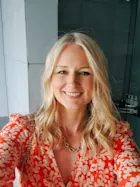The agentic AI awakening: inside the tech powering autonomous innovation
Louis Boroditsky — 10 December 2025
5 min read
14 April 2022

Traffic jams are a nuisance for individual drivers and fleets alike. But what if there was a way to use the data we can now collect on traffic movement to reduce them?
A partnership between Yunex Traffic and HERE aims to do exactly that. Using HERE Probe Data, the tool can help create a detailed picture of how vehicles move around cities. This information can be used to improve the traffic flow, reduce emissions and make roads safer.
“We are in a process of transformation now where we are digitizing the entire road infrastructure," said Martin Schulze Suedhoff, Head of Urban Solutions at Yunex Traffic. “That includes hardware such as signal heads, but also making use of all the data that are available to optimize the traffic flow, make it safer and make it greener."

This diagram shows how traffic turned at an intersection in Wiesbaden over one week.
Yunex Traffic, which started as a wing of Siemens Mobility but is now a separate company, started with the data it collects from detectors at major intersections. But to get a full picture of traffic movement, they needed data from smaller intersections and other stretches of road.
“That is where HERE Probe Data comes into play, to provide this missing piece," Schulze Suedhoff explained. “The complementary data gives us a 360-degree view of the intersection." The HERE data can also help create a picture of what kinds of vehicles are using the roads, and the lengths of jams they are in.
Armed with this data, city authorities can then plan interventions to tackle congestion. This information can also be used to find out where speeding hotspots are so that cameras or other traffic-calming measures can be placed there.
“Having speed cameras brings the average speed down to a reasonable level, even when people do not get speeding tickets," Schulze Suedhoff said. Being able to see the speeding hotspots at a glance in a Yunex Traffic report saves municipal departments hours of time monitoring the roads to gather this information.

London has used Yunex Traffic to decide where to place ultra-low emissions zones like this one.
There are multiple advantages to reducing speeding and traffic congestion on our streets. The most obvious one is that fewer speeding vehicles means fewer collisions and safer roads. When traffic flows more smoothly and without congestion, vehicles also produce fewer emissions and ultimately the air is cleaner.
Yunex Traffic has already worked with cities including London, UK, to use this data for planning measures to alleviate gridlock. “Before planning a congestion charge or low emissions zone, for example, you need to understand what the exact traffic flow in the city is," Schulze Suedhoff said. “You cannot get all that from physical detectors, which is where the data from HERE gives us more visibility and enhances our picture."
Getting an accurate overview not only helps cities understand what is happening now, but to predict and plan. This has become critical as many seek to redesign their streets, giving priority to different kinds of road users and more sustainable modes of transportation. Yunex Traffic's solution can be used to create simulations for cities to test different scenarios before making permanent changes.
Pilot schemes are now taking place throughout Europe. While the results of these are not yet known, Schulze Suedhoff said early indicators of these trials suggest significant improvements can be made.
As well as city authorities, traffic police, environmental departments, bus companies and private fleets are just some of the organizations that could use the tool.
“Logistics companies can use this to optimize their routes, avoiding areas with high traffic. If you want to implement a bus route, you also need to understand the traffic flow, particularly at peak times. Otherwise, the timetable will not make sense," Schulze Suedhoff said.
“This product will support us in helping cities to apply for sustainability funds, and then renew and refurbish their traffic infrastructure in the city, and then make it more digital."

Beth McLoughlin
Share article
Louis Boroditsky — 10 December 2025
Maja Stefanovic — 09 December 2025
Louis Boroditsky — 08 December 2025
Why sign up:
Latest offers and discounts
Tailored content delivered weekly
Exclusive events
One click to unsubscribe